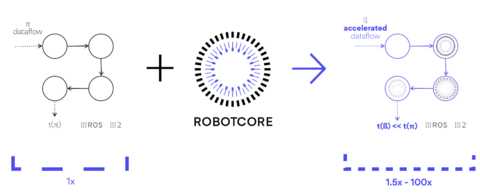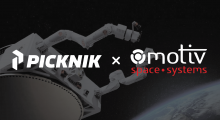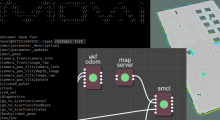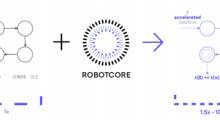Semiconductor startup Acceleration Robotics S.L. this week launched ROBOTCORE, its hardware acceleration framework for the Robot Operating System, or ROS. Acceleration Robotics said it focuses on designing customized brains for robots to hasten their response times.
Delivering semiconductor building blocks for robots, the Vitoria-Gastiez, Spain-based company said it creates custom compute architectures for high-performance robots through hardware acceleration while remaining robot and accelerator-agnostic. Acceleration Robotics supports popular field-programmable gate arrays (FPGAs) and graphics processing units (GPUs).
ROBOTCORE extends ROS and works with vendor-proprietary libraries, empowering hardware acceleration in robotics across silicon vendors, the company said.
Framework enables developers to create APIs
ROBOTCORE allows robotic engineers to create ROS and ROS 2 API-compatible intellectual property (IP) cores that increase a robot's performance, including latency and throughput, claimed Acceleration Robotics.
These “robot cores” can make robots faster, more deterministic, and power-efficient, the company said. ROBOTCORE launches with support for more than 10 development boards, including the most popular hardware-acceleration systems to build robots with ROS.
The framework builds on top of proven open-source robotics software, such as ROS 2, so that roboticists don't spend time redeveloping what already works and focus instead on delivering higher-performance applications.
While providing a vendor-agnostic ROS-centric development flow, the company said ROBOTCORE can solve customer design challenges in areas including robot sensing, perception, mapping, localization, motion control, low-level control, or actuation. It claimed that it can do so at 500x the speed of modern processors.
“Robots are networks of networks, with sensors passing data to compute technologies and actuators,” stated Víctor Mayoral-Vilches, founder of Acceleration Robotics. “These networks can be understood as the nervous system of the robot.”
“Like with the human nervous system, low latency and real-time information is fundamental for the robot to behave coherently,” he added. “Faster robots—or with more dexterity—require faster computations.”
“Hardware acceleration with ROBOTCORE empowers exactly this,” Mayoral-Vilches said. “With ROS being the common language roboticists use to build 'robot brains,' ROBOTCORE extends ROS and deals with GPU and FPGA vendor-proprietary libraries, empowering hardware acceleration across silicon vendors.”
Article topics
Email Sign Up
















